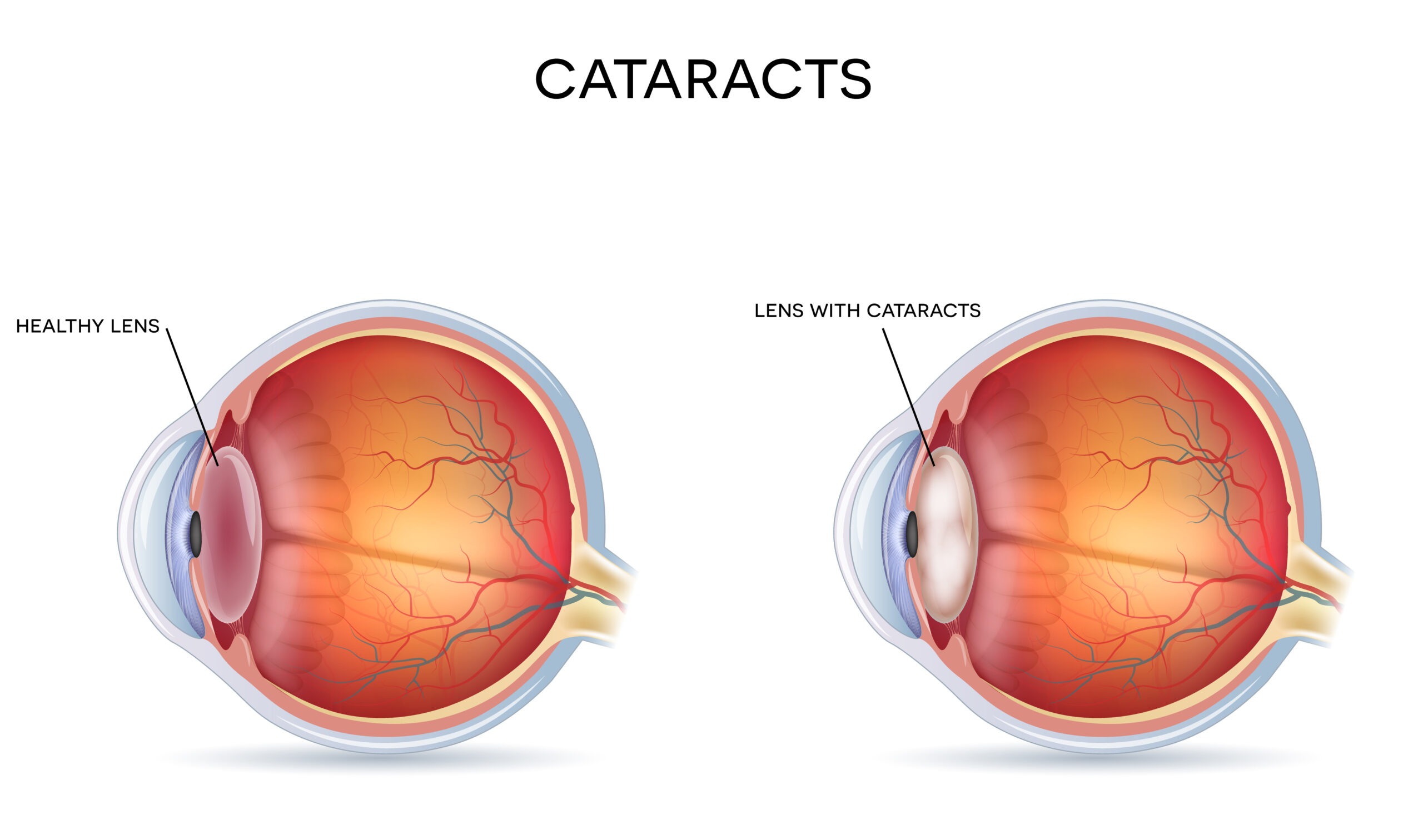What is a cataract?
Cataract is a clouding of the normally clear lens inside the eye. It is the leading cause of treatable vision impairment. With slowly developing cataract, the eye sight becomes increasing blurry, somewhat like looking through a misty dirty window instead of through a clear, transparent one.

Cataract can also cause glare sensitivity or haloes around lights, difficulty reading despite updated glasses, difficulty driving at night, and reduction of colour discrimination.
What are the symptoms of a cataract?
The symptoms of cataracts may include:
- Blurred or cloudy vision
- Sensitivity to light and glare
- Difficulty seeing at night
- Fading or yellowing of colours
- Need for frequent changes in glasses or contact lens prescriptions
- Double vision in a single eye
How is a cataract diagnosed?
Dr John Chang is able to diagnose cataracts using specialised equipment at his practices.
Usually, pupil dilating eye drops are needed to fully examine the lens and with a special illuminating microscope, Dr Chang will be able to diagnose the type and severity of cataract.
Not all cataracts are the same, and there are in fact several different types of cataracts, such as nucleosclerotic, cortical or posterior subcapsular cataracts. They can have differing impacts on your vision as well as different rates of progression.
Although most cataracts develop gradually over a period of years, some can develop more quickly within months and result in a relatively quick visual deterioration.
It is very important that your retinal specialist ensures that there are no other eye conditions such as macular degeneration, glaucoma, or diabetic retinopathy that may be causing your visual difficulties instead of, or in addition to your cataract. This will determine what treatment options are best for you and for some patients, other eye treatments may be more important before cataract surgery can be safely offered. Dr John Chang provides a personalised treatment plan for his patients, carefully explaining all the options.
What are my options for cataract treatment?
If cataracts are affecting your vision and quality of life, there are effective treatment options available:
- Non-Surgical Approaches:
In the early stages, cataract symptoms might be managed through updated eyeglass prescriptions, improved lighting, and the use of anti-glare sunglasses. - Cataract Surgery:
When cataracts significantly impact your vision, surgery is often recommended. During cataract surgery, the cloudy lens is removed and replaced with an artificial intraocular lens (IOL). This procedure is highly successful and is usually performed on an outpatient basis. - Advanced Lens Options:
Depending on your specific needs and preferences, there are different types of IOLs available, including multifocal or toric lenses that can correct nearsightedness, farsightedness, and astigmatism in addition to addressing cataracts.
Recovery and aftercare
After cataract surgery, patients may experience improved vision within a few days, but it's important to follow post-operative instructions and attend follow-up appointments. Full recovery may take several weeks.
Remember, if you suspect you have cataracts or are experiencing changes in your vision, it's crucial to consult an eye care professional for a proper diagnosis and personalized treatment plan.

